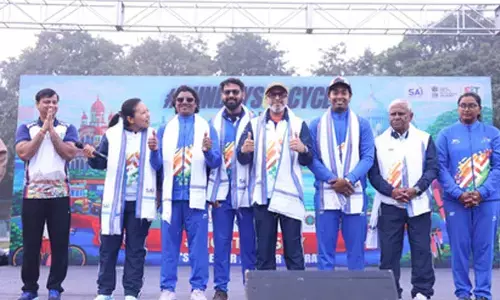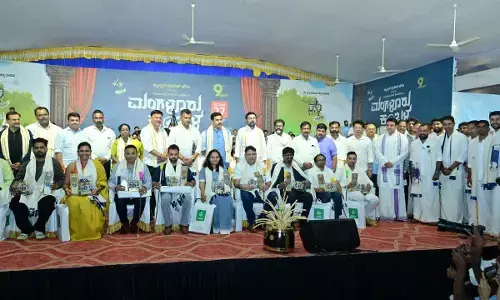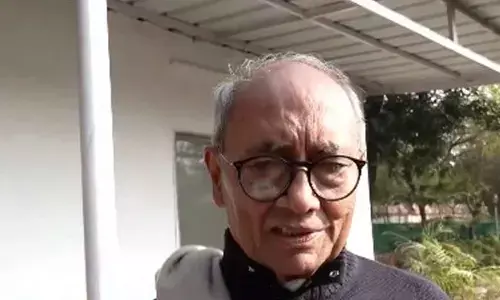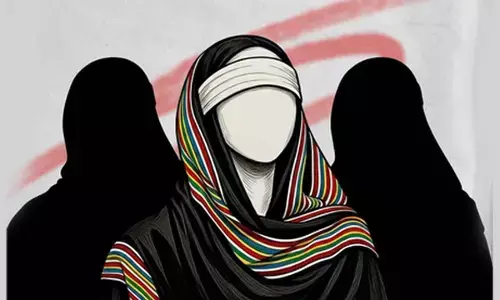Allies should rein in BJP

Kuldip Nayar: Allies Should Rein In BJP, 2014 Elections, Regional Sentiments, Newspapers, Television. It looks as if India’s political scene, after the 2014 elections, may still be more divided and fragmented than before. More and more parties have emerged on the basis of regional sentiments.
It looks as if India’s political scene, after the 2014 elections, may still be more divided and fragmented than before. More and more parties have emerged on the basis of regional sentiments.
 POLLSTERS are busy counting straws in the wind to guess which party will form the next government at the Centre. Newspapers and television channels lap up the surveys made because they make good copy. Astrologers have also jumped into the fray as they have done before every election.
POLLSTERS are busy counting straws in the wind to guess which party will form the next government at the Centre. Newspapers and television channels lap up the surveys made because they make good copy. Astrologers have also jumped into the fray as they have done before every election.
At stake are the 535 seats in the Lok Sabha, the Lower House. The elected candidates will constitute the next five-year-tenure government. One point which is common in all the estimates that are coming out is that no single party will get a majority and that each one of them will have to seek allies to reach the magic figure of 272.
The government of Prime Minister Manmohan Singh is the product of a similar exercise. Some 25-odd parties have given support to the Congress-led coalition. The Congress won 203 seats in the last election. The next parliament may require many more parties and independents to have a viable combination.
It looks as if India’s political scene, after the 2014 elections, may still be more divided and fragmented than before. More and more parties have emerged on the basis of regional sentiments. Then there is the assertion of identity and some parties have surfaced to represent their region or caste. This seems to be the trend that has stuck with the nation. After independence the Congress was the only party which commanded a majority.
It stayed in power for almost five decades. But then the Congress benefited from its leadership during the freedom struggle. It was a platform for all those who participated in the national movement. To equate the Congress with independence is a misdemeanor. Today the splinter groups of the Congress are full-fledged parties. It may seem trivialization of politics. But it is the result of a democratic process.
One party which is not an offshoot of the Congress is the Bharatiya Janata Party (BJP). It can claim to have built itself from scratch. It seems to be the only viable opponent to the Congress at present. What beleaguers the two parties is not so much their hostility towards each other as is the group-ism within. And it is comical how a pro-Hindutva BJP member becomes secular overnight when he joins the Congress or the secularist Hinduvta votary when he crosses over to the BJP?
How long the high commands of the two parties can hide the internal revolts from the people is yet to be seen. The coming elections will be the test because those who do not get the party ticket are potential rivals. Assembly polls in recent years have witnessed such trends in States. Elections to the Parliament will be no different.
Till recently there was no doubt that the Congress would emerge as the largest party in the 2014 polls. But today this is not the case. Most people would place their bet on the superiority of the BJP. The Congress would be placed at No. 2. Surveys conducted by several newspapers and television channels also made similar predictions. It would indeed be a big upset if the elections were to throw up the Congress as No. 1 party, although it has retrieved a bit of lost ground.
The credit for this is being given to Rahul Gandhi. This may be only partly true. The main reason is that the Muslim vote is returning to the Congress because the community feels disillusioned with Mulayam Singh Yadav’s Samajwadi Party which failed it during the Muzaffarnagar riots.
Now another faux pass has taken place over the letter sent by the State home secretary. The letter said that top officials should meet to ponder over the construction of Ram Janmabhoomi at the site where the Babri Masjid stood once. The home secretary has been suspended but the damage has been done.
The BJP’s renewed strength is the emergence of Gujarat Chief Minister Narendra Modi. He has created in northern India a strong sentiment for the Hindutva philosophy. The BJP is riding the crest of that chauvinism. In the process, he has damaged the idea of India and the country’s integrity. The BJP or, for that matter, the RSS is happy over the polarization he has effected, something both had failed to bring about. Consequently, the pre-eminent position that the Congress has enjoyed so far has undergone a change. Despite a patchy support in the south, the BJP is currently ahead of the Congress. This has given a new edge to the conflict between the two.
It is sharper and more intractable than before. The last two parliament sessions saw the unbridgeable distance. There was not even a semblance of agreement on any matter that brought the proceedings in both the Houses almost to a standstill.
Opposition is understandable. It is a common feature in democracy. Yet, one cannot make out why the two parties have adopted a posture which is harmful to the country. Both are in the way of development, a slogan which Modi has adopted to hide communalism by spoiling the chance of even limited consensus. Some equation, however slim, is essential for a dialogue in democracy.
Finding the people’s exasperation with both, the Aam Aadmi Party (AAP) has come into being. Yet mostly confined to Delhi, it has caught the imagination of voters. The people’s boredom with either the Congress or the BJP may well have been the reason for serious talks over a third front.
The Left, Samajwadi Party, Janata Dal (United) and Odhisa’s BJD have met at Delhi to discuss an alliance. The pre-poll alliance has been rightly rejected because they are pitted against one another in States. Their unity depends on how they fare in elections. Even then it is difficult for anyone or some of them forming the government at the Centre without the support of either the Congress or the BJP. The only silver lining is that all parties are looking for allies. This may compel them to change their set agenda. If this forces the BJP to dilute its Hindutva stance, it is good for the nation.








